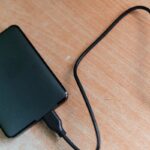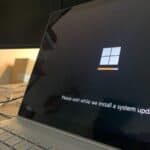Recording computer audio can be very useful for capturing music, podcasts, or other sounds from your PC. Many people think it’s complicated, but it’s actually quite simple. You can record your computer’s audio using free software and built-in tools. This guide will show you how to do it in a few easy steps.
To start, adjust your audio settings to prepare for recording. Some useful options include Audacity and Windows Voice Recorder. For those without Stereo Mix, Windows WASAPI can help record audio directly from your computer. These tools let you capture sounds with minimal hassle.
Audacity is a free and powerful tool that works well for this task. Open it, set your recording device to Stereo Mix or Windows WASAPI, and start recording. If you prefer something simpler, Windows Voice Recorder is built into the operating system and easy to use.
Key Takeaways
- Adjust audio settings before recording.
- Free tools like Audacity and Windows Voice Recorder work well.
- Use Windows WASAPI if Stereo Mix is unavailable.
Understanding Computer Audio Recording
Computer audio recording involves capturing sound produced by a computer or external audio sources using specific software and hardware tools. The audio can come from system sounds, applications, or connected devices.
Basic Concepts of Audio Recording
Audio recording on a computer means capturing sound signals and converting them into digital files. Internal sound refers to the audio produced by your computer itself, like system sounds and application audio. External sound involves input from devices like microphones or musical instruments.
Recording quality depends on factors like bit rate, sample rate, and recording channels. Higher bit rates and sample rates usually mean better audio quality. Stereo recording uses two channels, which provides a more detailed sound, while mono uses one channel.
Audio Recording Software
Various software options help in recording audio from a computer. For example, Audacity allows recording even if the stereo mix option is unavailable. Windows Voice Recorder can record audio using the default microphone or internal system sounds.
These programs often let users select audio formats such as MP3, WAV, or FLAC. Users can also usually adjust settings like bit rate and sample rate according to the desired audio quality. Some software includes features for editing and adding effects to recordings.
Audio Input and Recording Devices
Hardware plays a crucial role in audio recording. An audio interface can connect external sound sources to the computer, converting analog signals to digital. This device improves recording quality by offering better sound fidelity.
Sound drivers are essential for communication between hardware and software. Proper installation of audio drivers ensures the audio setup functions correctly. Microphones come in different types, such as USB or XLR, with varying audio quality levels. An audio cable might be needed to connect instruments or other audio sources to the interface.
Understanding these components helps in achieving better results when recording computer audio. Effective use of recording devices and software enhances the audio output, delivering clearer and more accurate sound.






